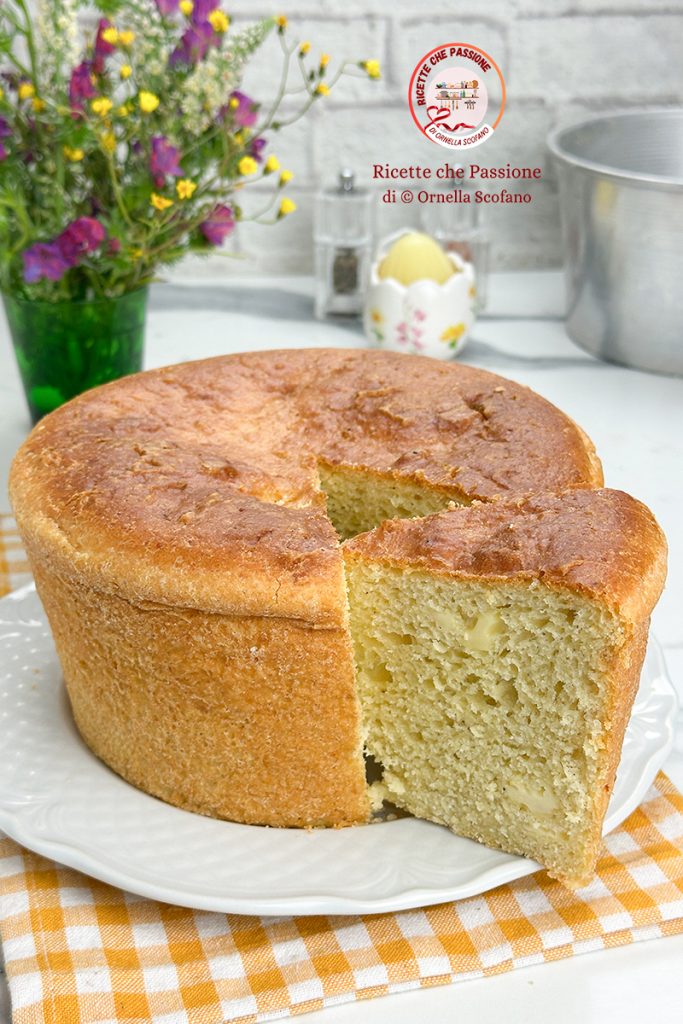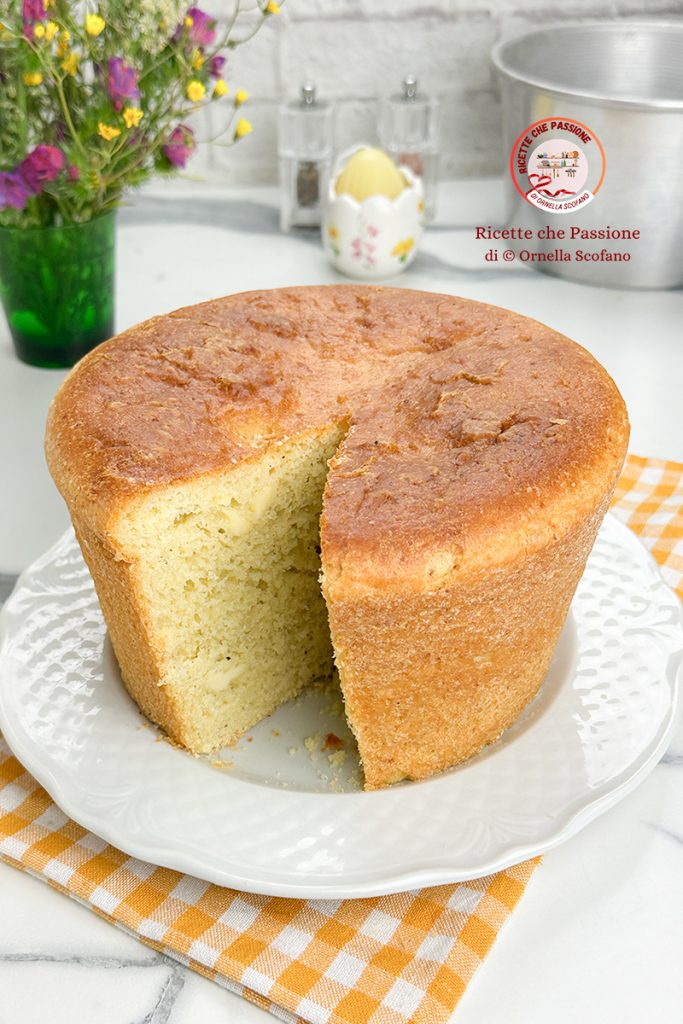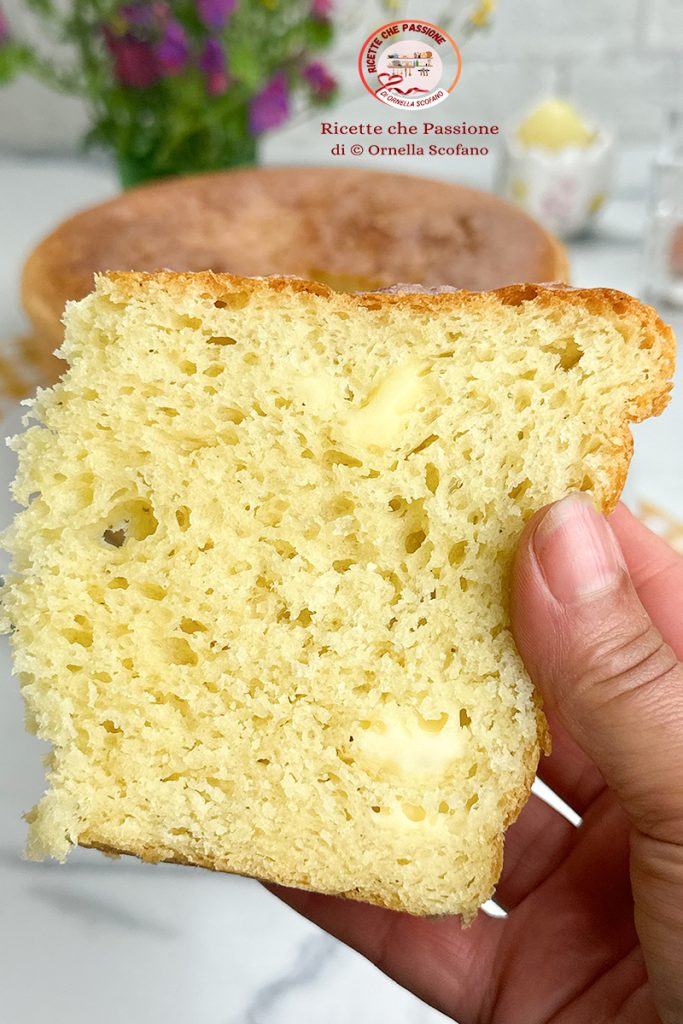Easter cheese bread, the savory cheese cake typical of Umbria and Marche, where it is eaten for breakfast on Easter and Easter Monday with cold cuts and eggs. This is my first time making and tasting it, I’ve always seen my friends and colleagues from those areas prepare it, so this year I finally decided to try it myself. I didn’t follow one particular recipe because it’s hard to find two identical recipes online; everyone has a family recipe or makes small modifications to the ingredient quantities to suit personal tastes and needs. I did the same by experimenting, and the result was so amazing that I’m here to share the recipe with you. I’ve read that there are differences between the recipes, but I haven’t quite understood them. Maybe someone from those areas can explain better, or I’ll have to ask one of my colleagues. I’m sure they can give me more precise guidance. In the meantime, I’ll leave you the recipe so you can start trying it, as it’s really a great idea to bring to the table on Easter as tradition goes, and not just for Easter and Easter Monday. Also, try the sweet version, sweet Easter pizza.

- Difficulty: Easy
- Cost: Economic
- Rest time: 5 Hours
- Preparation time: 30 Minutes
- Portions: 10 servings
- Cooking methods: Oven
- Cuisine: Italian
- Seasonality: Easter
Ingredients for Easter Cheese Bread
- 2 cups Manitoba flour
- 2 cups all-purpose flour
- cup milk
- 1 cup Parmesan cheese
- cup Pecorino cheese
- 6 tbsp extra virgin olive oil
- tbsp fresh yeast
- 3 eggs
- to taste black pepper
- 2 tsp salt
- 1 tsp sugar
- cup Gruyère cheese
Tools for preparing Easter Cheese Bread
- 1 Bowl
- 1 Spoon
- 1 Mold
Steps for preparing Easter Cheese Bread

In a large bowl, dissolve the yeast in the milk while stirring with a spoon, and also add 1 tsp of sugar. Milk can be at room temperature or cold, it doesn’t need to be warm.
Add the eggs one at a time, and mix continuously. Then add the grated cheeses, Parmesan and Pecorino, and mix again.
Also add plenty of freshly ground black pepper, mix, then add the all-purpose flour and mix. Add the salt and mix, always with a spoon. Then gradually add the rest of the Manitoba flour and before incorporating it all, also add the olive oil.
Once a soft and homogeneous dough is obtained, let it rest in the bowl for 10 minutes, then resume working it to make it more elastic and less sticky. Repeat 2-3 times until the dough is well bonded enough that working by hand on a surface it no longer sticks to the hands.
At this point, the dough is ready, cut the Gruyère cheese into cubes, spread the dough on a surface and incorporate the cheese inside, make a nice loaf, close it, and let it rise directly in the mold.
The mold is the tall aluminum panettone mold 8 inches in diameter. It must be buttered and floured before placing the loaf inside.
Let it rise for 4-5 hours in a warm corner, I put it in the oven with a pot of boiling water. This way, it doesn’t even need to be covered, as the humidity created by the steam prevents it from drying out on the surface.
When the dough has reached the edge, we can proceed to cooking. Preheat the oven to 356°F static, and bake it in the lower part, so remove any intermediate racks.

Before baking, brush water on the surface and bake in a hot oven for about 55 minutes. When, after 35 minutes, it’s already well-golden on the surface, cover with a sheet of parchment paper folded in half, thus doubled.
Remove from the oven and let it cool in the mold for at least an hour, then remove from the mold and let it cool completely. Once cooled, keep it in a closed bag to preserve all the softness like just baked, a cloud of goodness, moist and pleasant with a delicious and delicate cheese flavor. It keeps well for several days, perfect for Easter and Easter Monday breakfast.
A cloud and what a delight those cheese pieces inside are, I accompanied it also with 2 sunny-side-up eggs, extraordinary. If you like, you can also add a bit of spicy provolone or salami in small pieces.

